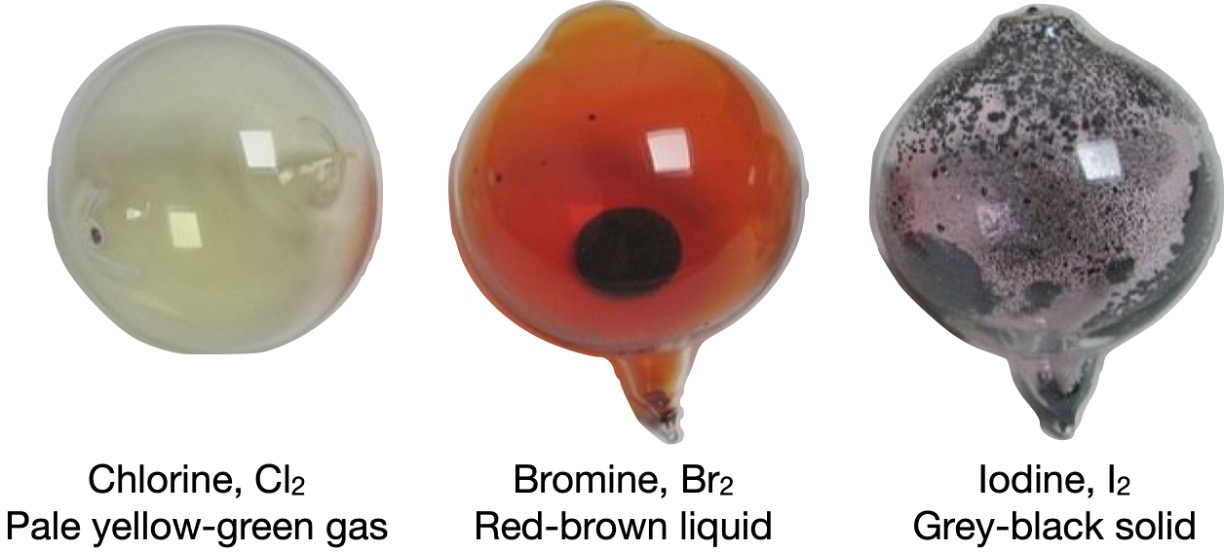1. Halogens
The halogen family found in Group VII of the Periodic Table shows clear similarities between the elements of the group. The common properties of the halogens are:
- They are all poisonous and have a similar strong smell.
- They are all non-metals.
- They all form diatomic molecules (eg: Cl2, Br2 and I2).
- They all form 1- charged ions when they react with metals to form compounds.
- They each produce a series of compounds with other elements, such as chlorides, bromides and iodides. Together these are known as halides.
- They have increasing boiling points down the group.
- They have increasing density down the group.
- They have decreasing reactivity down the group.

| halogen | melting point ℃ | boiling point ℃ | state at r.t.p. | colour |
| chlorine | -101 | -35 | gas | pale yellow-green |
| bromine | -7 | 59 | liquid | red-brown |
| iodine | 114 | 184 | solid | grey-black |
2. Chemical properties of halogens
In chemical reactions, halogens have the tendency to gain electron to form anions which are called halides (such as chloride Cl–, bromide, Br– and iodide, I–). For example, sodium can burn in chlorine gas to produce sodium chloride which is composed by sodium ion (Na+) and chloride (Cl–).
The reactivity of halogens depends on the ability to gain electron. Down the group, halogens become less reactive.
(1) reaction with water
chlorine + water → hydrochloric acid + hypochlorous acid
Cl2 + H2O → HCl + HClO
(2) Halogen displacement reaction
One typical reaction for halogen is displacement which a more reactive halogen displaces a less reactive halogen from a solution of its salt.
Cl2 + 2KBr → 2KCl + Br2
colorless → orange
The ionic equation is:
Cl2 + 2Br– → 2Cl– + Br2
Chlorine can displace bromine from potassium bromide because chlorine is more reactive than bromine.
I2 + 2KCl → N.R. (No Reaction)
Iodine cannot displace chlorine from potassium chloride because iodine is less reactive than chlorine.
| reaction with | chlorine | bromine | iodine |
| colored dyes | bleaches easily | bleaches slowly | bleaches very slowly |
| iron wool | iron wool reacts strongly to form iron(III) chloride; needs heat to start | iron wool reacts steadily to form iron(III) chloride; needs continuous heating | iron reacts slowly, even with continuous heating, to form iron(III) iodide |
| chlorides | / | no reaction | no reaction |
| bromides | displaces bromine, e.g. Cl2 + 2KBr → 2KCl + Br2 | / | no reaction |
| iodides | displaces iodine, e.g. Cl2 + 2KI → 2KCl + I2 | displaces iodine, e.g. Br2 + 2KI → 2KBr + I2 | / |
发表回复